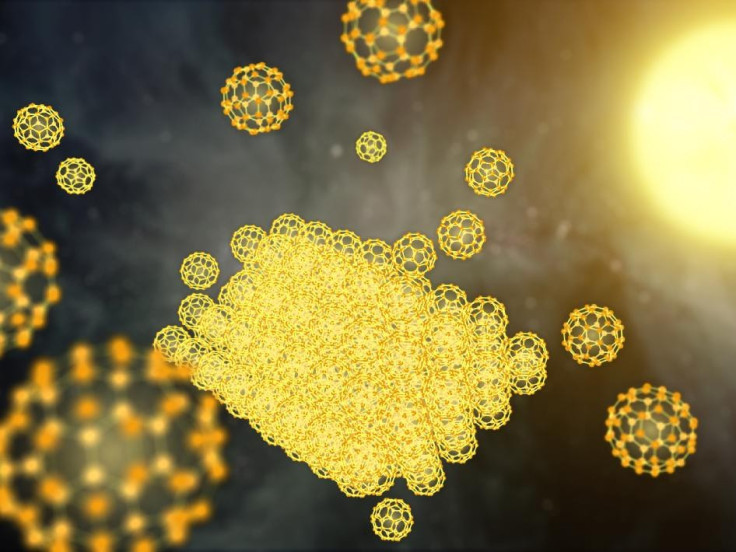Nasa Discovers Solid 'Buckyballs' In Space

Astronomers using NASA's Spitzer Space Telescope have discovered "buckyballs", in a solid form, in space. The finding was confirmed by a NASA press release.
Formally named "buckminsterfullerene", "buckyballs" are named after their resemblance to the late architect Buckminster Fuller's geodesic domes. They are made up of 60 carbon molecules arranged into a hollow sphere, like a soccer ball. Their unusual structure makes them ideal candidates for electrical and chemical applications on Earth, including superconducting materials, medicines, water purification and armor.
The discovered "buckyballs" are smaller than the width of a hair and were discovered in proximity to a pair of stars called XX Ophiuchi, which are 6,500 light years from Earth.
"Buckyballs" were first detected in 2010, in the form of gas molecules. The newly discovered ones, though, are unique because they are in solid form. The research team was able to identify these using data from the Spitzer telescope because they emit light in a unique way, compared to their gaseous brethren.
Astronomers are speculating that gaseous molecules present in space linked up to form solid particles. This shows that large quantities of those gaseous molecules are present in some stellar environments.
Meanwhile, "buckyballs" have been found on Earth in various forms. They form as a gas from burning candles and exist as solids in certain types of rock, such as the mineral shungite found in Russia and fulgurite, a glassy rock from Colorado that forms when lightning strikes the ground.
"Buckyballs" are the roundest and most symmetrical of large molecules and its discovery, in 1985, led to that of several new materials like nanotubes. They have also been successfully used in drug treatments, circuits, lubricants and superconductors.
"This exciting result suggests that "buckyballs" are even more widespread in space than the earlier Spitzer results showed," said Mike Werner, the project scientist for Spitzer at NASA, adding, "They may be an important form of carbon, an essential building block for life, throughout the cosmos."
© Copyright IBTimes 2025. All rights reserved.





















